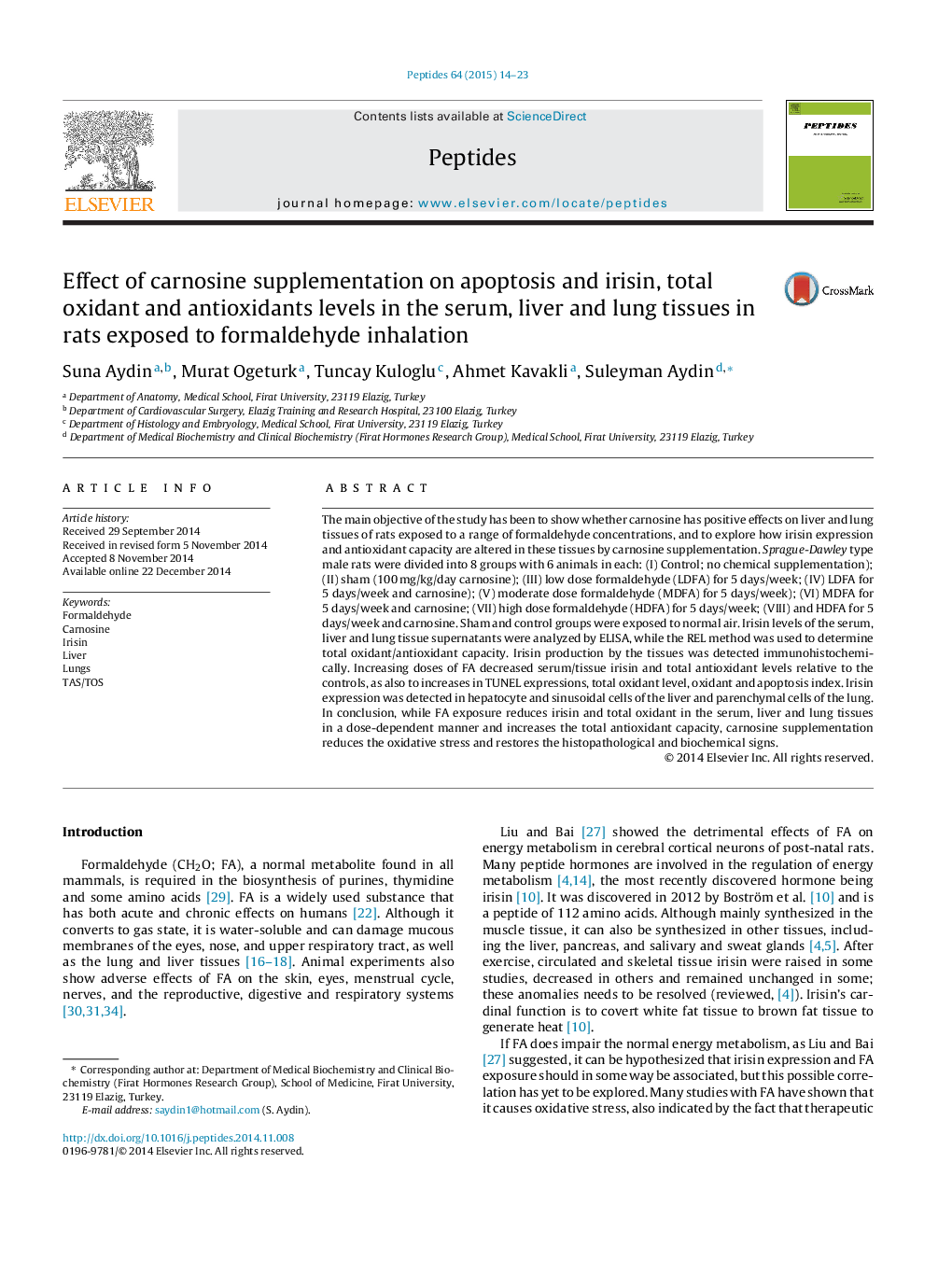| Article ID | Journal | Published Year | Pages | File Type |
|---|---|---|---|---|
| 2005964 | Peptides | 2015 | 10 Pages |
•Formaldehyde reduces irisin and TAS in a dose-dependent manner.•Both parenchymal cells of the lungs, and hepatocyte and sinusoidal cells of the liver have irisin immunoreactivity.•Formaldehyde increases TOS and the oxidant index in a dose-dependent manner.•Formaldehyde dose-dependently increases TUNEL quantities.•Carnosine supplementation mitigates the damaging effects of formaldehyde.
The main objective of the study has been to show whether carnosine has positive effects on liver and lung tissues of rats exposed to a range of formaldehyde concentrations, and to explore how irisin expression and antioxidant capacity are altered in these tissues by carnosine supplementation. Sprague-Dawley type male rats were divided into 8 groups with 6 animals in each: (I) Control; no chemical supplementation); (II) sham (100 mg/kg/day carnosine); (III) low dose formaldehyde (LDFA) for 5 days/week; (IV) LDFA for 5 days/week and carnosine); (V) moderate dose formaldehyde (MDFA) for 5 days/week); (VI) MDFA for 5 days/week and carnosine; (VII) high dose formaldehyde (HDFA) for 5 days/week; (VIII) and HDFA for 5 days/week and carnosine. Sham and control groups were exposed to normal air. Irisin levels of the serum, liver and lung tissue supernatants were analyzed by ELISA, while the REL method was used to determine total oxidant/antioxidant capacity. Irisin production by the tissues was detected immunohistochemically. Increasing doses of FA decreased serum/tissue irisin and total antioxidant levels relative to the controls, as also to increases in TUNEL expressions, total oxidant level, oxidant and apoptosis index. Irisin expression was detected in hepatocyte and sinusoidal cells of the liver and parenchymal cells of the lung. In conclusion, while FA exposure reduces irisin and total oxidant in the serum, liver and lung tissues in a dose-dependent manner and increases the total antioxidant capacity, carnosine supplementation reduces the oxidative stress and restores the histopathological and biochemical signs.
